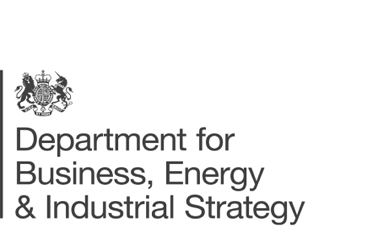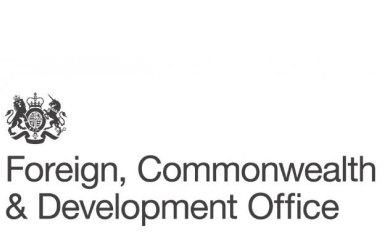ISO 19650 is the prominent global standard for the implementation of BIM, focusing on the collaborative process integral to the entire life cycle of constructed assets. Developed and published by the International Organization for Standardization (ISO), this standard serves as a comprehensive framework for managing information from the conception of a project, through construction and operation to its eventual decommissioning. The development and publication of ISO 19650 highlights the commitment of international standards bodies to creating a consistent and efficient approach to BIM implementation on a global scale.
ISO 19650 is a multi-part standard. Part 1 delineates fundamental concepts and principles, while Part 2 provides practical guidance for information management throughout the project life cycle. The scalability of ISO 19650 allows organizations to tailor its application to the specific needs and intricacies of their projects. As an internationally recognized standard, ISO 19650 reflects the collaborative efforts of standards bodies to enhance global construction industry practices. Throughout this process, transparency, collaboration, and consensus-building are key principles. ISO standards, including ISO 19650, are developed with input from experts and stakeholders worldwide to ensure that they reflect a global consensus on best practices.
A country might choose to adopt ISO 19650 for several reasons, all of which contribute to the standard’s potential benefits in enhancing the efficiency and effectiveness of construction and infrastructure projects. Some of the reasons why a country might decide to adopt ISO 19650:
- Global standardisation of processes
- Support interoperability and collaboration
- Consider a quality assured approach to information management
- Competitive advantage and potential for cross boarder trade
- Improved project delivery outcomes
In summary, the adoption of ISO 19650 by a country can bring about international alignment, improved collaboration, risk reduction, and enhanced competitiveness in the construction industry, ultimately contributing to more successful and sustainable infrastructure development. Countries will usually adopt ISO 19650 by publishing a national annex to the standard.
https://biblus.accasoftware.com/ptb/abnt-nbr-iso-19650-saiba-mais-sobre-a-norma/
In 2015, the BIM Laboratory of Santa Catarina was created, known as LaBIM-SC, which was part of the BIM GOV SUL Network together with the states of Paraná and Rio Grande do Sul. LaBIM-SC was in charge of preparing case studies, with the aim of maximizing the potential gains with the use of the BIM methodology applied to projects, execution and inspection of works, as well as management and operation of assets.
The SC BIM Implementation and Implementation Guide was prepared in 2022 and aims to cover public organizations in Santa Catarina, focusing on the bodies that make up the SC BIM Strategy Technical Committee. The purpose is to guide the implantation and implementation of the methodology in a clear and gradual way. In this way, good project management practices were adopted in order to map and mitigate possible problems in advance in a segmented manner by areas of knowledge, recommended by the PMBOK.
https://www.bim.sc.gov.br/c%C3%B3pia-cadernos-t%C3%A9cnico-bim-sc
An archive version of this information article has been created if the original is no longer accessible (Archive information from January 2024)
In 2015, the BIM Laboratory of Santa Catarina was created, known as LaBIM-SC, which was part of the BIM GOV SUL Network together with the states of Paraná and Rio Grande do Sul. LaBIM-SC was in charge of preparing case studies, with the aim of maximizing the potential gains with the use of the BIM methodology applied to projects, execution and inspection of works, as well as management and operation of assets.
There are numerous initiatives within the scope of the Federal Government for the adoption of BIM in Brazil, one of them is the publication of Decree nº 9.983, in 2019, which established the National Strategy for the Dissemination of BIM. This action, in addition to structuring the adoption of BIM at the federal level, also fostered and encouraged the use of BIM in state projects and works.
In order to coordinate and structure BIM actions in Catarina, Decree No. 1,370 of 2021 was published, which establishes the State Strategy for the Implementation and Dissemination of BIM in Santa Catarina (BIM SC Strategy) and the Technical Committee of the BIM SC Strategy (CT-BIM SC), currently formed by eleven public entities. This document shares the BIM Roadmap as well as the 10 objectives of the strategy which include:
- Disseminate the BIM concept and its benefits
- Coordinate the structuring of the public sector for the adoption of BIM
- Promote organizational, cultural and process changes for the adoption of BIM
- Create conditions for the adoption of the BIM methodology throughout the construction life cycle
- Stimulate and promote training in BIM
- Propose regulatory acts that establish parameters for purchases and public contracts with the use of BIM
- Develop technical standards, guides and specific protocols for the adoption of BIM
- Develop the portal and BIM SC library
- Stimulate the development and application of new technologies related to BIM
- Encourage competition in the market through neutral standards of BIM interoperability
https://www.bim.sc.gov.br/c%C3%B3pia-cadernos-t%C3%A9cnico-bim-sc
An archive version of this information article has been created if the original is no longer accessible (Archive information from January 2024)
This Decree establishes the National Strategy for the Dissemination of Building Information Modelling in Brazil РBIM BR Strategy (Estrat̩gia BIM BR), with the purpose of promoting an adequate environment for investment in BIM and its dissemination in the country. The document gives terms of reference for the Strategy, details its objectives, its actions, and the Management Committee representatives (from various Ministerial departments), among other information. The Management Committee will be advised in the execution of their powers by the Technical Group.
The Federal Government created the Committee for Strategic Implementation of the Building Information Modelling (CE-BIM) in June 2017 to formulate a strategy that would align public and private sector initiatives and boost the use of BIM in Brazil. This document (Estrat̩gia Nacional de Dissemina̤̣o do Building Information Modelling РBIM) was produced to encourage the development of the construction sector and bring more cost effectiveness and greater transparency to the bidding processes, in addition to contributing to the optimisation of process maintenance and asset management.
The report gives the strategy, specific objectives, indicators and targets, a roadmap from 2018 to 2028, and information on the escalation of BIM.


